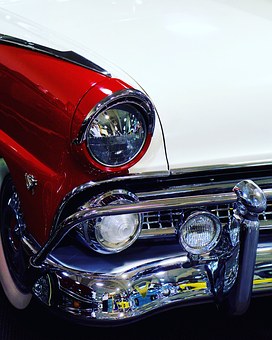Pen Computing - China Disposable Vaginal Speculum - China Medical Disposables Products

General techniques of pen computing
General techniques of pen computingUser interfaces for Pen computing can be implemented in several ways. Actual systems generally employ a combination of these techniques.
Pointing/Locator input

The tablet and stylus are used as pointing devices, such as to replace a mouse. Note that a mouse is a
relative pointing deviceou use the mouse to "push the cursor around" on a screen.
However a tablet is an
absolute pointing devicehere you put the stylus is exactly where the cursor goes.
There are a number of human factors considerations when actually substituting a stylus and tablet for a mouse. For example, it is much harder to target or tap the same exact position twice with a stylus, so "double-tap" operations with a stylus are harder to perform if the system is expecting "double-click" input from a mouse.
Note that a finger can be used as the stylus on a touch-sensitive tablet surface, such as with a touchscreen.
Handwriting recognition
The tablet and stylus can be used to replace a keyboard, or both a mouse and a keyboard, by using the tablet and stylus in two modes:
Pointing mode: The stylus is used as a pointing device as above.
On-line Handwriting recognition mode: The strokes made with the stylus are analyzed as a "electronic ink", by software which recognizes the shapes of the strokes or marks as handwritten characters. The characters are then input as text, as if from a keyboard.
Different systems switch between the modes (pointing vs. handwriting recognition) by different means, e.g.
by writing in separate areas of the tablet for pointing mode and for handwriting-recognition mode.
by pressing a special button on the side of the stylus to change modes.
by context, such as treating any marks not recognized as text as pointing input.
by recognizing a special gesture mark.
The term "on-line handwriting recognition" is used to distinguish recognition of handwriting using a real-time digitizing tablet for input, as contrasted to "off-line handwriting recognition", which is optical character recognition of static handwritten symbols from paper.
Direct manipulation
The stylus is used to touch, press, and drag on simulated objects directly. See the special Wiki article on Direct manipulation. The Wang Freestyle system is one example. Freestyle worked entirely by direct manipulation, with the addition of electronic "ink" for adding handwritten notes.
Gesture recognition
This is the technique of recognizing certain special shapes not as handwriting input, but as an indicator of a special command.
For example, a "pig-tail" shape (used often as a proofreader's mark) would indicate a "delete" operation. Depending on the implementation, what is deleted might be the object or text where the mark was made, or the stylus can be used as a pointing device to select what it is that should be deleted.
Recent systems have used digitizers which can recognize more than one "stylus" (usually a finger) at a time, and make use of Multi-touch gestures.
The PenPoint OS was a special operating system which incorporated gesture recognition and handwriting input at all levels of the operating system. Prior systems which employed gesture recognition only did so within special applications, such as CAD/CAM applications or text processing.
History
Pen Computing has very deep historical roots. The depth of these roots can be quite surprising to people who are only familiar with current commercial products. For example, the first patent for an electronic tablet used for handwriting was granted in 1888. The first patent for a system that recognized handwritten characters by analyzing the handwriting motion was granted in 1915. The first publicly-demonstrated system using a tablet and handwriting text recognition instead of a keyboard for working with a modern digital computer dates to 1956.
In addition to many academic and research systems, there were several companies with commercial products in the 1980s: Pencept, Communications Intelligence Corporation, and Linus were among the best known of a crowded field. Later, GO Corp. brought out the PenPoint OS operating system for a tablet PC product: one of the patents from GO corporation was the subject of recent infringement lawsuit concerning the Tablet PC operating system.
The following timeline list gives some of the highlights of this history:
Before 1950
1888: U.S. Patent granted to Elisha Gray on electrical stylus device for capturing handwriting.
1915: U.S. Patent on handwriting recognition user interface with a stylus.
1942: U.S. Patent on touchscreen for handwriting input.
1945: Vannevar Bush proposes the Memex, a data archiving device including handwriting input, in an essay As We May Think.
1950s
Tom Dimond demonstrates the Styalator electronic tablet with pen for computer input and handwriting recognition.
Early 1960s
RAND Tablet invented.
Late 1960s
Alan Kay of Xerox PARC proposed a notebook using pen input called Dynabook: however device is never constructed.
1982
Pencept of Waltham, Massachusetts markets a general-purpose computer terminal using a tablet and handwriting recognition instead of a keyboard and mouse.
Cadre System markets the Inforite point-of-sale terminal using handwriting recognition and a small electronic tablet and pen.
1985:
Pencept and CIC both offer PC computers for the consumer market using a tablet and handwriting recognition instead of a keyboard and mouse. Operating system is MS-DOS.
1989
The first commercially available tablet-type portable computer was the GRiDPad from GRiD Systems, released in September. Its operating system was based on MS-DOS.
Wang Laboratories introduces Freestyle. Freestyle was an application that would do a screen capture from an MS-DOS application, and let the user add voice and handwriting annotations. It was a sophisticated predecessor to later note-taking applications for systems like the Tablet PC. The operating system was MS-DOS
1991
The Momenta Pentop was released.
GO Corp announced a dedicated operating system, called PenPoint OS, featuring control of the operating system desktop via handwritten gesture shapes.
Portia Isaacsen of Future Computing estimates the total annual market for pen computers such as those running the PenPoint OS to be on the order of $500 Million.
NCR released model 3125 pen computer running MS-DOS, Penpoint or Pen Windows.
The Apple Newton entered development; although it ultimately became a PDA, its original concept (which called for a larger screen and greater sketching capabilities) resembled that of a tablet PC.
Sam Tramiel of Atari Corp. presented the "ST-Pad" (codenamed "STylus") at the CeBIT '91 in Hanover, Germany. The computer never went into production.
1992
GO Corp shipped PenPoint and IBM announced IBM 2125 pen computer (the first IBM model named "ThinkPad") in April.
Microsoft releases Windows for Pen Computing as a response to the PenPoint OS.
1993
The IBM releases the ThinkPad, IBM's first commercialized portable tablet computer product available to the consumer market, as the IBM ThinkPad 750P and 360P
AT&T introduced the EO Personal Communicator combining PenPoint with wireless communications.
1999
The "QBE" pen computer created by Aqcess Technologies wins Comdex Best of Show.
2000
The "QBE Vivo" pen computer created by Aqcess Technologies ties for Comdex Best of Show.
2001
Bill Gates of Microsoft demonstrates first public prototype of a Tablet PC (defined by Microsoft as a pen-enabled computer conforming to hardware specifications devised by Microsoft and running a licensed copy of the "Windows XP Tablet PC Edition" operating system) at Comdex.
2003
Fingerworks develops the touch technology and touch gestures later used in the Apple IPhone.
2006
Windows Vista released for general availability. Vista included the functionality of the special Tablet PC edition of Windows XP.
2008
In April 2008, as part of a larger federal court case, the gesture features of the Windows/Tablet PC operating system and hardware were found to infringe on a patent by GO Corp. concerning user interfaces for pen computer operating systems.
HP releases the second MultiTouch capable tablet: the HP TouchSmart tx2z.
Further information
Annotated bibliography of references to handwriting recognition and pen computing
References
^ Dimond, T.L. (1957-12-01), Devices for reading handwritten characters, Proceedings of Eastern Joint Computer Conference, pp.232237, http://rwservices.no-ip.info:81/pens/biblio70.html#Dimond57
^ Groner, G.F. (1966-08), Real-Time Recognition of Handprinted Text, Memorandum RM-5016-ARPA, RAND Corporation, http://users.erols.com/rwservices/pens/biblio70.html#Groner66a
^ WANG Freestyle demo, Wang Laboratories, 1989, http://rwservices.no-ip.info:81/pens/images.html#WangFreestyle, retrieved 2008-09-22
^ Computerized Graphic Processing System: System User's Manual, Applicon Incorporated, 1973-09-01, http://rwservices.no-ip.info:81/pens/biblio75.html#Applicon73
^ Newman, W.M. (1973-09-01), The Ledeen Character Recognizer, Principles of Interactive Computer Graphics, McGraw-Hill, pp.575582, http://users.erols.com/rwservices/pens/biblio75.html#NewmanWM73a
^ Coleman, Michael L. (1969), Text editing on a graphic display device using hand-drawn proofreader's symbols, from Pertinent Concepts in Computer Graphics: Proceedings of the 2nd University of Illinois Conference on Computer Graphics, University of Illinois Press, http://rwservices.no-ip.info:81/pens/biblio70.html#Coleman69
^ Gray, Elisha (1888-07-31), Telautograph, United States Patent 386,815 (full image), http://www.freepatentsonline.com/386815.pdf
^ Goldberg, H.E. (1915-12-28), Controller, United States Patent 1,117,184 (full image), http://www.freepatentsonline.com/1117184.pdf
^ Dimond, Tom (1957-12-01), Devices for reading handwritten characters, Proceedings of Eastern Joint Computer Conference, pp.232237, http://rwservices.no-ip.info:81/pens/biblio70.html#Dimond57, retrieved 2008-08-23
^ Mintz, Jessica (2008-04-04), Microsoft to Appeal $367M Patent Ruling, The Associated Press, http://www.usatoday.com/tech/products/2008-04-04-2507619152_x.htm, retrieved 2008-09-04
^ Gray (1888-07-31), Telautograph, United States Patent 386,815, http://rwservices.no-ip.info:81/pens/biblio70.html#Gray1888b
^ Gray, Elisha (1888-07-31), Telautograph, United States Patent 386,815 (full image), http://www.freepatentsonline.com/386815.pdf
^ Goldberg, H.E. (1915-12-28), Controller, United States Patent 1,117,184, http://users.erols.com/rwservices/pens/biblio70.html#GoldbergHE15
^ Goldberg, H.E. (1915-12-28), Controller, United States Patent 1,117,184 (full image), http://www.freepatentsonline.com/1117184.pdf
^ Moodey, H.C. (1942-12-27), Telautograph System, United States Patent 2,269,599, http://users.erols.com/rwservices/pens/biblio70.html#Moodey40
^ Moodey, H.C. (1942-12-27), Telautograph System, United States Patent 2,269,599 (full image), http://www.freepatentsonline.com/2269599.pdf
^ Bush, Vannevar (1945-07-15), As We May Think, The Atlantic Monthly, http://rwservices.no-ip.info:81/pens/biblio70.html#BushV45
^ Dimond, Tom (1957-12-01), Devices for reading handwritten characters, Proceedings of Eastern Joint Computer Conference, pp.232237, http://rwservices.no-ip.info:81/pens/biblio70.html#Dimond57, retrieved 2008-08-23
^ RAND Tablet, 1961-09-01, http://users.erols.com/rwservices/pens/biblio70.html#RAND61
^ 50 Years of Looking Forward, RAND Corporation, 1998-09-01, http://www.rand.org/publications/randreview/issues/rr.fall.98/50.html
^ Pencept Penpad (TM) 200 Product Literature, Pencept, Inc., 1982-08-15, http://rwservices.no-ip.info:81/pens/biblio83.html#Pencept83
^ Inforite Hand Character Recognition Terminal, Cadre Systems Limited, England, 1982-08-15, http://rwservices.no-ip.info:81/pens/biblio83.html#Inforite82
^ Users Manual for Penpad 320, Pencept, Inc., 1984-06-15, http://users.erols.com/rwservices/pens/biblio85.html#Pencept84d
^ Software Control at the Stroke of a Pen, Pencept, Inc., 1985, http://www.open-video.org/details.php?videoid=8023&surrogate=storyboard, retrieved 2009-05-21
^ Handwriter (R) GrafText (TM) System Model GT-5000, Communication Intelligence Corporation, 1985-01-15, http://rwservices.no-ip.info:81/pens/biblio85.html#CIC85
^ The BYTE Awards: GRiD System's GRiDPad, BYTE Magazine, Vol 15. No 1, 1990-01-12, pp.285, http://rwservices.no-ip.info:81/pens/biblio90.html#GridPad90a
^ WANG Freestyle demo, Wang Laboratories, 1989, http://rwservices.no-ip.info:81/pens/images.html#WangFreestyle, retrieved 2008-09-22
^ Lempesis, Bill (1990-05), What's New in Laptops and Pen Computing, Flat Panel Display News, http://rwservices.no-ip.info:81/pens/biblio90.html#Momenta90
^ Agulnick, Todd (1994-09-13), Control of a computer through a position-sensed stylus, United States Patent 5,347,295, http://users.erols.com/rwservices/pens/biblio95.html#Agulnick94
^ Agulnick, Todd (1994-09-13), Control of a computer through a position-sensed stylus, United States Patent 5,347,295 (full image), http://www.freepatentsonline.com/5347295.pdf
^ ([dead link] Scholar search) NCR announces pen-based computer press release, http://findarticles.com/p/articles/mi_m0NEW/is_1991_June_24/ai_10957018, retrieved 2007-04-20
^ ([dead link] Scholar search) Penpoint OS shipping press release, http://findarticles.com/p/articles/mi_m0NEW/is_1992_April_17/ai_12165379, retrieved 2007-04-20
^ Lenovo - The history of ThinkPad
^ Trends at COMDEX Event 1999, http://www.guiart.fi/gobr01en.htm, retrieved 2008-08-11
^ Microsoft (2005), Windows XP Tablet PC Edition 2005 Hardware Requirements, www.microsoft.com, http://users.erols.com/rwservices/pens/biblio10.html#Microsoft06i, retrieved 2009-03-14
^ Fingerworks, Inc. (2003), iGesture Game Mode Guide, www.fingerworks.com, http://rwservices.no-ip.info:81/pens/biblio05.html#Fingerworks03, retrieved 2009-04-30
^ MacEssentials (2007-08-02), Rubrik Apple: Das Lexikon der Fingersprache, www.mac-essentials.de, http://users.erols.com/rwservices/pens/biblio10.html#MacEssentials07a, retrieved 2009-05-16
^ Mintz, Jessica (2008-04-04), Microsoft to Appeal $367M Patent Ruling, The Associated Press, http://www.usatoday.com/tech/products/2008-04-04-2507619152_x.htm, retrieved 2008-09-04
^ HP TouchSmart tx2z, HP, http://www.shopping.hp.com/webapp/shopping/computer_can_series.do?storeName=computer_store&category=notebooks&a1=Category&v1=Mobility&series_name=tx2z_series, retrieved 2008-11-28
External links
The Unknown History of Pen Computing contains a history of pen computing, including touch and gesture technology, from approximately 1917 to 1992.
Annotated bibliography of references to handwriting recognition and pen computing
A number of links to pen computing resources.
See also
Gesture recognition
Graphics tablet
Handwriting movement analysis
Handwriting recognition
Tablet PC
Pen Scanner
Digital Ink
Interactive whiteboard
Laser pointer (e.g. highlighting)

Graffiti Lighting
Light Pen
Categories: User interface techniquesHidden categories: All articles with dead external links | Articles with dead external links from April 2009
by: gaga